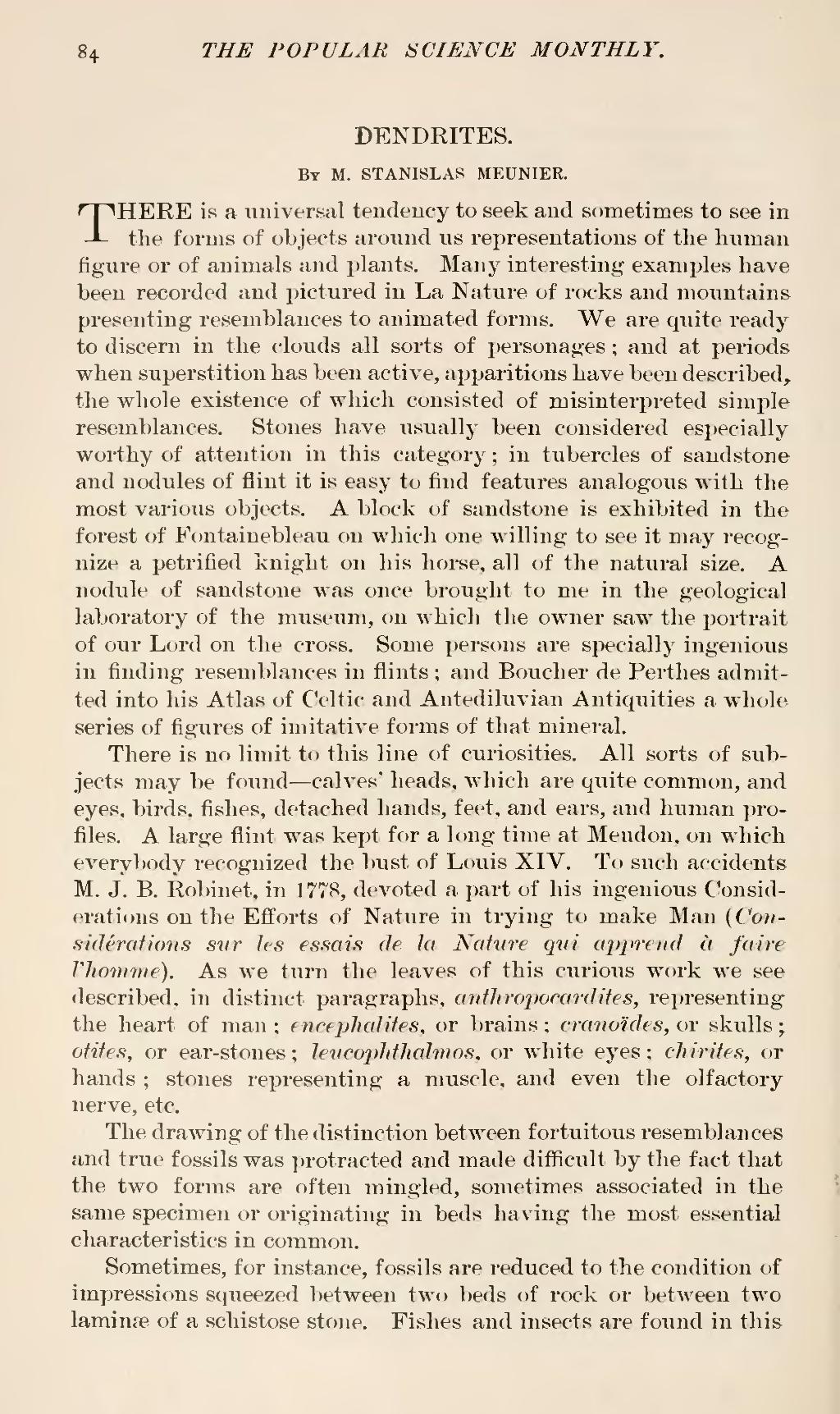| DENDRITES. |
By M. STANISLAS MEUNIER.
THERE is a universal tendency to seek and sometimes to see in the forms of objects around us representations of the human figure or of animals and plants. Many interesting examples have been recorded and pictured in La Nature of rocks and mountains presenting resemblances to animated forms. We are quite ready to discern in the clouds all sorts of personages; and at periods when superstition has been active, apparitions have been described, the whole existence of which consisted of misinterpreted simple resemblances. Stones have usually been considered especially worthy of attention in this category; in tubercles of sandstone and nodules of flint it is easy to find features analogous with the most various objects. A block of sandstone is exhibited in the forest of Fontainebleau on which one willing to see it may recognize a petrified knight on his horse, all of the natural size. A nodule of sandstone was once brought to me in the geological laboratory of the museum, on which the owner saw the portrait of our Lord on the cross. Some persons are specially ingenious in finding resemblances in flints; and Boucher de Perthes admitted into his Atlas of Celtic and Antediluvian Antiquities a whole series of figures of imitative forms of that mineral.
There is no limit to this line of curiosities. All sorts of subjects may be found—calves' heads, which are quite common, and eyes, birds, fishes, detached hands, feet, and ears, and human profiles. A large flint was kept for a long time at Mendon, on which everybody recognized the bust of Louis XIV. To such accidents M. J. B. Robinet, in 1778, devoted a part of his ingenious Considerations on the Efforts of Nature in trying to make Man (Considerations sur les essais de la Nature qui apprend à faire l'homme). As we turn the leaves of this curious work we see described, in distinct paragraphs, anthropocardites, representing the heart of man; encephalites, or brains; cranoïdes, or skulls; otites, or ear-stones; leucophthalmos, or white eyes; chirites, or hands; stones representing a muscle, and even the olfactory nerve, etc.
The drawing of the distinction between fortuitous resemblances and true fossils was protracted and made difficult by the fact that the two forms are often mingled, sometimes associated in the same specimen or originating in beds having the most essential characteristics in common.
Sometimes, for instance, fossils are reduced to the condition of impressions squeezed between two beds of rock or between two laminæ of a schistose stone. Fishes and insects are found in this
